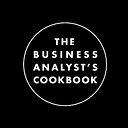Business Process Modeling & Notation 2.0 (BPMN 2.0) Quick Reference
Section 1.00 — Introduction
1.01 — Document Purpose
The purpose of this article is to provide the reader with a very high level summary of Business Process Modeling and Notation 2.0 (BPMN 2.0), a standard for the visual representation of business processes (or cooking processes in this case).
This document will not describe in detail all of the available elements, instead focusing on the most frequently used or more useful elements to enable the reader to understand or build process models of low to medium complexity, though I will aim to make the process models I create straightforward enough to understand without any introduction to process modeling.
However — process modeling is a surprisingly enjoyable and valuable activity, so this is a good starting point if you want to create your own.
For more resources on process modeling & other business analysis tools & techniques, please visit my resource site, The BA List.
1.02 — Overview
- BPMN 2.0 Overview
- Events
- Tasks
- Gateways
Section 2.00 — BPMN 2.0 Overview
2.01 — Elements
Elements are the building blocks of BPMN 2.0 process models. There are 5 categories of elements:
- Flow objects
- Data objects
- Connecting objects
- Swimlanes
- Artifacts
Flow Objects
Flow objects are the most commonly used elements of process models, these consist of events, activities (tasks), and gateways.
Events are something that happens during a process that alters its flow. A message has been received, an error has occurred, or perhaps a certain amount of time has elapsed. In cooking this will most commonly be either a change in state (the butter begins to bubble or the onions are translucent) or the elapsing of time (flip the wings once 15 minutes have passed).
Any work that is performed within a business process, task, or sub-process, may be considered an “activity”, though the most common activity is a task. “Chop the onion”, “Season the beef”, “Set stove to high”, etc.
Gateways are used to control process flow, but do not represent work being done. As an example, an exclusive (XOR) gateway, indicates that only one of the following paths may be taken, while inclusive (OR) gateway indicate that one or more paths may be taken. In the cooking world, this might appear when determining whether or not you want a steak cooked rare, medium-rare, medium, or well-done, as each would require you to remove the steak from the heat at different points in time.
Data Objects
A data object represents information flowing through the process, such as reports, emails, or other business documents. Some process activities may require data input before they can be executed.
I don’t imagine this being useful in a cooking context, but perhaps in more complex, multi-day or multi-person recipes where a hand-off of current status may occur.
Connecting Objects
A connecting object is used to connect flow objects to each other. Solid lines are used to represent sequence flows, perforated lines are used to show message flows, and dotted lines show associations.
Data associations are used to move data between data objects and input and outputs of activities and processes.
Swimlanes
Swimlanes consist of pools and lanes. Together they define the process boundaries and participants. Pools are typically used to represent one organization, while lanes are used to divide the structures within one organization. However, there are no explicit rules regarding this pool/lane assignment largely depends on the goal of the particular process model.
Most recipes on the Business Analyst’s cookbook will use one pool to represent a specific dish, and two lanes — one to represent the “Prep” steps (chopping, peeling, etc.) and another lane to represent the “Cook” steps (frying, baking, boiling, etc.). However, when I choose to document a larger meal — perhaps a starter, main with sides, and dessert, then I might choose to use a pool for each individual item. On the other hand — if it would be clearer to visualize all dishes within one pool, then I might simply use a single pool with more lanes or larger lanes.
There are no hard rules, and the utilization of lanes might vary dependent on the situation.
In the business world, pools and lanes typically consist of:
- Organizations
- Departments
- Teams
- Individual workers
- Systems
Artifacts
Artifacts are used to provide additional information about the process — the most commonly used artifacts are text annotations (to help describe a process) and associations (used to associate artifacts with flow objects).
2.02 — Tokens
A token is a concept used as an aid to define the behaviour of a process. Tokens are typically generated with start events and consumed with end events, though there are some exceptions to this rule. Tokens traverse sequence flows and may be cloned or merged when passing through a gateway. For example, a token would be cloned when passing through a parallel gateway and merged when entering the synchronizing parallel gateway (this is illustrated below following the intermediate event “Application received”). Tokens do not traverse message flows.

